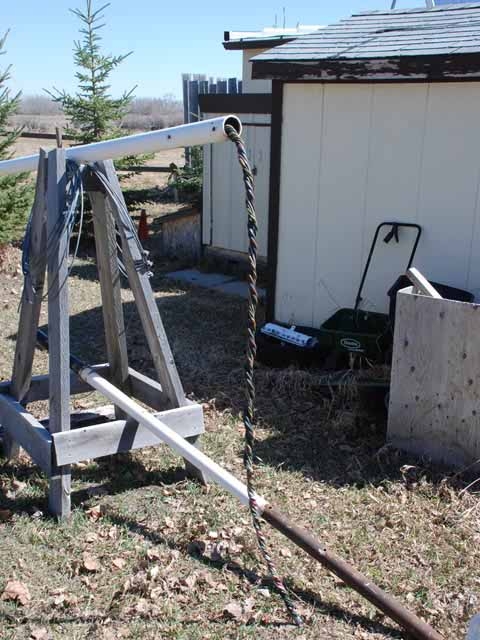It is one of those long-standing questions that wind turbine builders must face, "drop cable or slip rings?"
The cable drop is simple, and reliable as long as it's been secured at the top. There is often very little trouble for most builders.
Others choose to make slip rings, to allow the turbine to swivel about as needed without concern for the cable twisting up.
I have always chosen the "drop cable", mostly because it is so simple and I'm not patient enough to fuss about with slip rings.
During maintenance of my WT last summer, however, I had a moment to pause and reconsider:

That's just a dozen or so twists that are visible. As you can guess it was quite a tangle all the way down.
Since my wind turbine is always pointing into the wind, then all that twisting must be coming from changes in wind direction that keep adding up. Clockwise.
Last summer, I wasn't prepared to do anything about it at the time. A new chassis was already finished for the turbine at that point, too late to put slip rings on, and I had so many many other things to do. Up it went, and I thought maybe the weather station info can confirm this later.
But winter is a great time to think about the things that you're too busy to deal with in the summer time (readers should be aware that today, 26th April, it is snowing here). One of the things I wanted to figure out is just how often the wind turns about full circle, which way, does it turn back the other way, and all that stuff. Digging through the heaps of data from my weather station, I've finally extracted a result:

Wow
On the graph, positive is clockwise. There's no point showing the counter-clockwise side, because throughout the year, the wind is always making more clockwise direction changes than counter-clockwise changes. The flat spot in July is a period of deactivation of the wind sensor, so there may even be a dozen more clockwise turns that I missed.
You can bet that I'm going to be reading more about slip rings in the future.